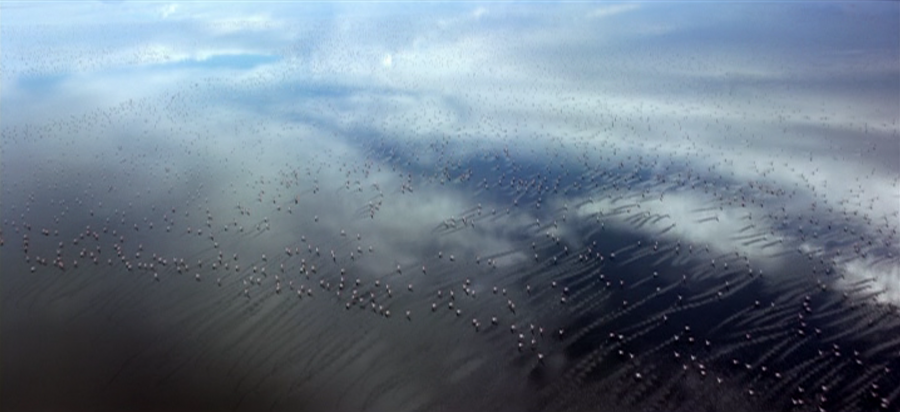

Surprisingly, Lake Natron is also a sanctuary for lesser flamingoes, who use the lake as their only regular breeding area. Some fish species can survive along the lake’s edge, where the water is less salty and hostile. The lake’s cyanobacteria are responsible for the lake’s red color. The lake essentially sends a message with its bright red color, warning those who cannot tolerate the hostile conditions to stay away.ĭespite its apparent inhospitable conditions, salt-loving organisms that can withstand the lake’s high temperatures thrive in Lake Natron, including endemic algae, invertebrates, and birds. The salt causes the lake to be highly alkaline, sometimes reaching a pH of 12 out of 14! Lake Natron’s temperature can reach up to 140 degrees Fahrenheit (60 degrees Celsius), which, combined with the extreme salinity, makes it an inhospitable place for most animals. This 35-mile long and 15-mile wide lake is a salt lake water flows in, but not out, and as the water evaporates, it leaves behind high concentrations of salt and minerals. Lake Natron, one of the most serene lakes in all of Africa, is located in northern Tanzania and nestled in the East African Rift System. you were thinking of taking a dip in Lake Natron – think again.

“This Alkaline African Lake Turns Animals Into Stone”.Subscribe to What-If on YouTube or follow the show on Facebook Watch. But if you’re craving something even more extreme, how about surviving a limnic eruption on your next swim? Think you could handle it? As for our flamingo friends, this just goes to show how the harshest environments can be a sanctuary for some animals. They quickly built stretchers and carried the injured to land in the nick of time.Įven though you could survive Lake Natron’s waters, I’d stick to a swimming pool if I were you. Incredibly, one of the passengers managed to struggle to shore and alerted some of the Masai tribespeople nearby. The pilot suffered a broken leg, and another passenger had a broken hip. A group of wildlife videographers plunged Lake Natron’s toxicity when their helicopter crashed. In 2007, another kind of bird flew straight into this chemical cocktail. Turns out, the lake’s toxic waters provide a safe haven from predators, making it perfect flamingo flocking grounds. Despite so many birds dying in Lake Natron, there is a particular species flourishing. Kind of like that one time in the office.

He theorized, since the lake is so mirror-like and reflective, the birds must have flown right into it. He discovered several stone birds and other unlucky animals in the dry season when the water had receded. In 2013, wildlife photographer Nick Brandt was one of the first to document this phenomenon. Talk about killing two birds with one stone! Any birds that happen to take a dive and don’t make it out become calcified in a hardened, stonelike husk. The whole chemical composition is extremely alkaline, with pH levels of 10.5 close to matching ammonia (NH3). Releasing into the water, this mix of sodium carbonate and sodium bicarbonate were key ingredients once used in Egyptian mummification, creating the perfect preservative in lake form. The volcano spews a rare kind of lava rich in sodium (Na) and potassium carbonate (K2CO3), called Natrocarbonatite, or Natron for short.


 0 kommentar(er)
0 kommentar(er)
